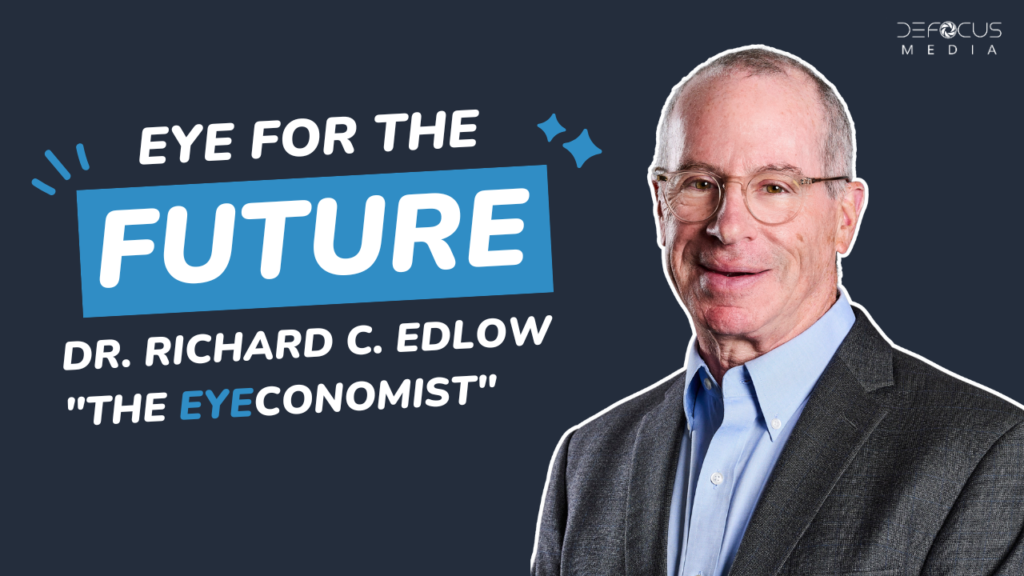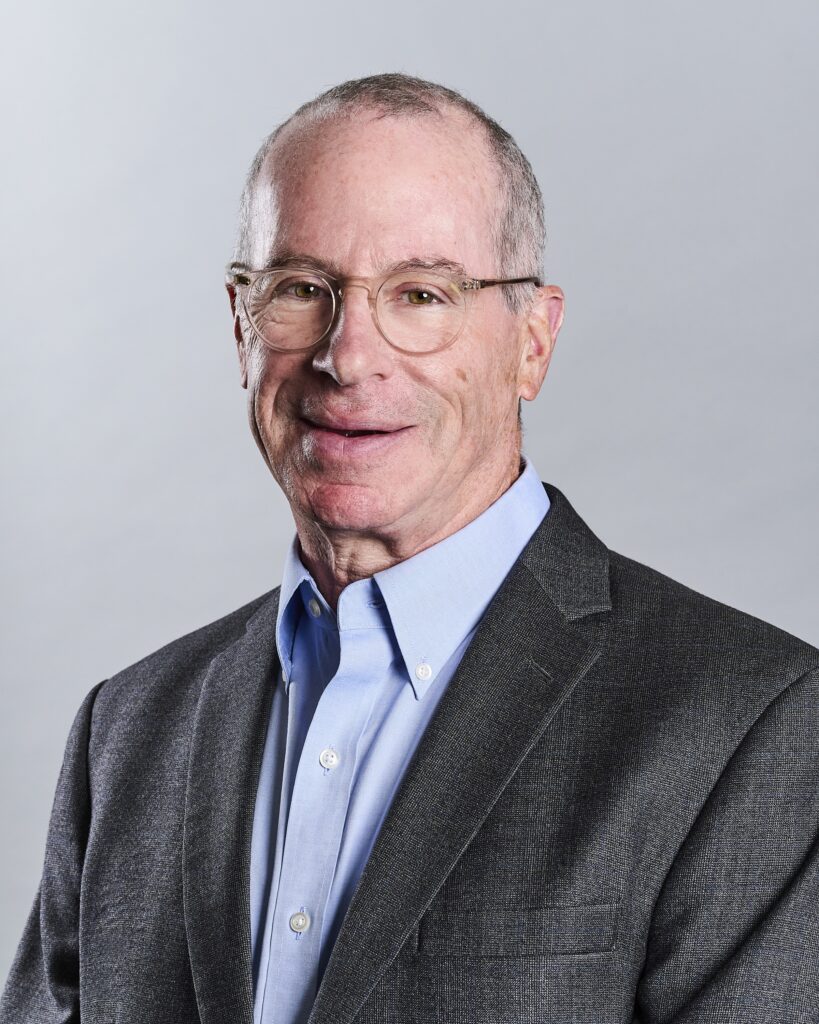Podcast: Play in new window | Download
Subscribe: Apple Podcasts | Spotify | Amazon Music | Android | RSS
What is the future of eyecare? What is the future of optometry? What is the future of ophthalmology? The future of eye care is likely to be shaped by several factors, including advancements in technology, changes in healthcare systems, evolving patient needs, and healthcare on demand. In this episode, Dr. Richard Edlow shares some potential trends and developments that could shape the future of eye care.
Table of Contents

Dr. Richard C. Edlow explores critical trends that will impact the future of eye care. From understanding the rising demand for medical eye care due to an aging population to recognizing the workforce challenges in optometry and ophthalmology, this episode offers a candid look at the state of the eyecare industry. We also delve into the opportunities for innovation and collaboration and the crucial need for greater diversity in the eye care industry. Tune in for an engaging and informative conversation on the future of eye care.
Dr. Richard C. Edlow’s Journey in Eye Care.
02:31-07:20
Dr. Darryl Glover:
Could you share a bit about your background, your story, and your journey into eye care?
Dr. Richard C. Edlow:
Absolutely. I’ve always been intrigued by healthcare economics. For 25 years, I was the CEO of a 26-doctor practice comprising 13 ophthalmologists and 13 optometrists. I managed the practice based on data and anticipated industry trends. We successfully completed a private equity investment in 2014, after which I gradually exited the role.
Parallel to this, I maintained a part-time optometric practice with a partner, practicing around 8 to 12 hours a week until March 2020. With the onset of COVID, I decided to retire clinically.
Although retired, I remain engaged with the industry. Besides picking up grandkids from school, I spend half my time tracking various data sources. I analyze Medicare utilization payment, census data, and information from the ASCO (Association of Schools and Colleges of Optometry), and the Association of University Professors in Ophthalmology. I crunch these numbers into detailed spreadsheets as I’m quite a numbers geek.
From these data, analyses emerge trends indicating where optometry might be in the next 5, 10, or 20 years. Through this, we can gain a clearer view of the future of eyecare and strategically plan for it. Based on this information, it’s crucial to consider your professional career path for the next 10 to 20 years. I find this data compelling and enjoy sharing it.
I disseminate this data with students in optometry schools during their practice management programs in the third year. I also share it with any state association or the American Optometric Association at no charge. I believe getting the word out there is essential as optometry has been very good to me and many others if approached correctly.
Despite our focus on numbers and data, the crux of the matter is patient care and being kind to people. If we do that right, everything else follows. So, that’s a brief history of my journey and where I stand today.
The Growth Opportunities in the Future of Eye Care.
10:26-12:51
Dr. Darryl Glover:
Where are the growth opportunities for the future of eye care? We want to keep our profession amazing and ensure we’re reaching all our patients.
Dr. Richard C. Edlow:
Absolutely. Initially, the response is all of the above. However, I focus on growth rates. We all know about the aging population in the US and age-related eye care such as glaucoma, cataracts, and macular degeneration. I track this based on census data and the prevalence of eye disease. The most recent data I’m using projects from 2020 to 2030. We have about seven more years to go until 2030, and the population that’s 65 and older, the Medicare population, is set to increase by 30%. The commercial population, which is 64 and younger, will only grow about 2%. The baby boomers, my generation, are growing 15 times faster than the commercial population.
So, if you ask where the greatest influx of patients will be over the next decade, it’s the aging population. That indicates that medical eye care is going to grow. We project about 26% of this population will show up in an eye doctor’s office, leading to an increase of 15 million eye exams per year. As a profession, we need to deliver 15 million more medical eye exams in 2030 than we’re doing today.
Age-related healthcare in the US accounts for 20% of the gross domestic product. One out of every $5 spent in the United States is on healthcare, most of which is age-related. So we’re in a good position. An additional 15 million medical eye exams need to be provided. Will it be optometry or ophthalmology? It’ll be a combination of the two.
The Challenge of Labor Supply in Optometry and Ophthalmology. How will it impact the Future of Eye Care?
15:54-17:44
Dr. Richard C. Edlow
And here’s something to consider: despite previous concerns about having too many optometry schools, we actually don’t have enough. In optometry, we have about 1700 new graduates each year. That may seem like a lot, but 1200 are exiting each year, leaving a net increase each year of about 560 optometrists for the entire country.

Wow, indeed. It’s quite the matter for the entire United States. One issue is that the greatest opportunity for optometry is not so much in the steady growth of optometrists but rather in the flat growth of ophthalmology. Consider this: I consistently track ophthalmology and residency programs. I update my documents annually and can forecast three to four years ahead, predicting how many new ophthalmologists we will have.
For instance, this July – July of 2023 – we will welcome 495 newly minted ophthalmologists who have completed their residency programs. But here’s the catch, 423 are exiting the profession for reasons like death or retirement. That leaves us with a net increase of 72 ophthalmologists for the entire United States.
Even more concerning is the distribution of these new doctors. Ten of them are heading to California, ten to Texas, ten to New York, and at least ten to Florida. This leaves the entire nation with a net increase of just 32 ophthalmologists. Thirty-two – not even one per state.
Are there any opportunities for the future of Eye Care from Disruption in the Eye Care Workforce?
40:00-41:41
Dr. Darryl Glover:
Shifting gears a bit, I want to explore what opportunities arise from the current disruption in the eyecare workforce. When I think about disruption, I can’t help but consider the potential opportunities that might also be present.
Dr. Richard C.Edlow:
Absolutely. The disruption lies in the workforce. It’s the stagnant labor supply in both optometry and ophthalmology. Over this 10-year period, we predict a 27.5% increase in medical eyecare demand. However, the labor supply in optometry won’t match this – it will only increase by 12.5%.
The labor supply in ophthalmology is even more disruptive, which is predicted to increase by only 3.5% over the same period. That’s just 0.3% a year. That’s the disruption, and simultaneously the opportunity. The workforce supply in eyecare is becoming more and more challenging. Quite frankly, we don’t have enough eye doctors.
How will Innovating and Diversifying the Eye Care Profession Impact the Future of Eye Care?
44:36-46:39
Dr. Darryl Glover:
We need to think creatively. Collaborating and growing our profession is essential, but we need to address this situation because the current numbers aren’t sustainable.
Dr. Richard C.Edlow:
Yes, and if we surveyed all 48,000 optometrists, I’d wager that many got involved in optometry because of their childhood eye doctor. We need to replicate this and focus on fostering greater diversity and accessibility. We should engage high school students and inform them about opportunities in optometry.
In the past, the armed forces would cover tuition for optometry students. Corporate entities are now stepping in to do the same, in partnership with optometry programs. This helps alleviate the financial burden and can contribute to increasing diversity.
It’s important to note that regulatory changes, healthcare policies, and societal attitudes toward eye care will also influence the future of optometry. As the profession evolves, optometrists will likely adapt to emerging trends and technologies to provide better and more accessible eye care services to their patients.
If you want to learn more about the future of optometry, please check out the podcast with Easy Anyama.


